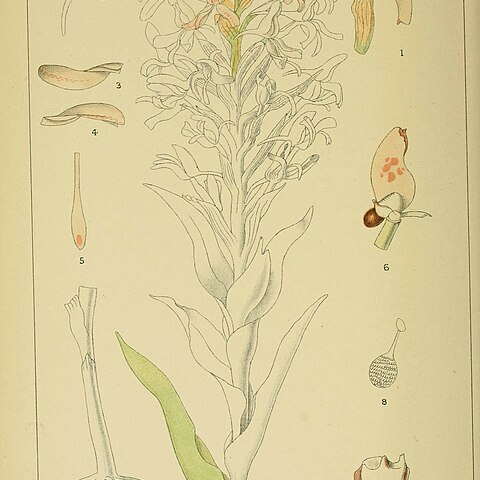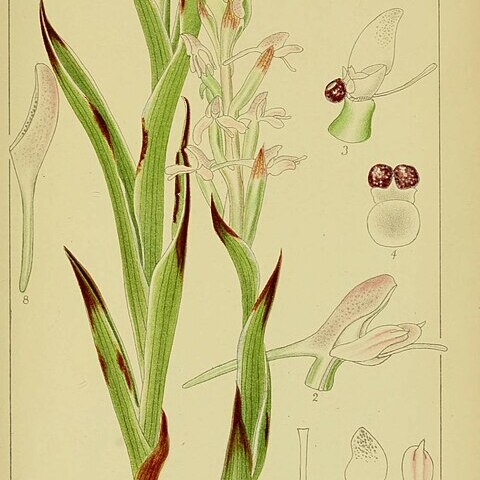Terrestrial herb, robust, geophyte, 0.40-0.85 m high; root tubers present. Leaves 8-11 cauline, imbricate, narrowly lanceolate, up to 190 x 23 mm, grading into floral bracts. Inflorescence a dense, cylindrical raceme; flowers 55-85, imbricate, resupinate, pink with purple spots at petal apices. Sepals 15-25 mm long; median sepal galeate, angled forwards, acute; lateral sepals narrowly spreading, apiculate; spur filiform, horizontal, sharply deflexed, 12-21 mm long. Petals obliquely narrowly oblong. Lip linear, por-rect, 17-28 mm long, widest at apex. Flowering time Dec.-Mar.
Terrestrial herb, up to 0.8 m high. Dorsal sepal longer than 15 mm. Petal apices often reflexed out of galea. Lip linear, often widened towards apex. Flowers pink with purple spots at apices of petals.


